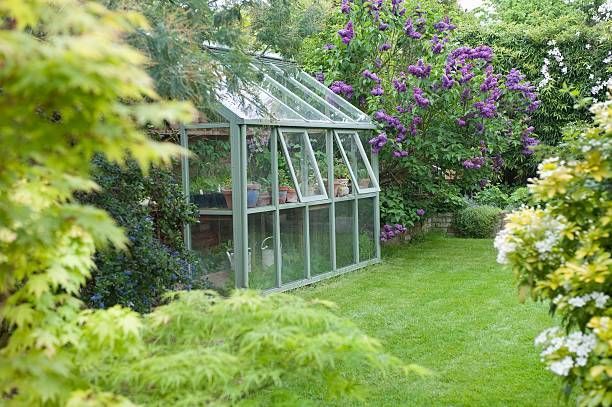The Future of Greenhouses: Advancements in Lasting Farming
Are you interested concerning the future of greenhouses and just how they are changing sustainable agriculture? From innovative climate control systems to vertical farming strategies, water-efficient irrigation methods, eco-friendly power assimilation, and clever information analytics, these developments are transforming the way we grow our food.
Advanced Environment Control Solution
To achieve optimal expanding conditions, you can rely upon the advancements in greenhouses with innovative environment control systems. These systems have actually revolutionized the way we cultivate plants, providing a regulated setting that is conducive to plant development. With these cutting-edge systems, you can now control temperature, humidity, light levels, and also carbon dioxide focus to produce the best conditions for your plants to flourish.
One of the key attributes of these innovative environment control systems is their capability to regulate temperature. By making use of sensing units and automated controls, the greenhouse can change the temperature based upon the details requirements of the plants. This makes sure that they are never exposed to severe warm or cold, which can be detrimental to their development.
Humidity control is another crucial facet of these systems. By preserving the perfect humidity degrees, you can avoid issues such as mold and mildew, mildew, and disease from impacting your crops. These systems can also manage the amount of light that gets to the plants, guaranteeing that they obtain the optimum quantity for photosynthesis.
Furthermore, progressed climate control systems can even manipulate carbon dioxide concentrations. By raising the degrees of carbon dioxide in the greenhouse, you can improve plant development and efficiency. This is especially valuable in areas with reduced natural carbon dioxide levels.
Upright Farming Techniques
One vital vertical farming method is making use of piled growing systems. Stacked growing systems are frequently made use of in city locations where space is limited.
One prominent approach is recognized as vertical hydroponics, where plants are grown in nutrient-rich water without soil. This technique is extremely effective as it lowers water use by up to 90% compared to conventional farming techniques. Furthermore, given that the plants are expanded indoors, they are safeguarded from insects and illness, lowering the need for chemicals.
An additional technique is aeroponics, which involves suspending the plant roots in a haze or air environment. This approach permits for optimum nutrient absorption and oxygenation, causing faster development and greater yields. Aeroponics likewise uses less water than conventional farming and can be carried out in upright systems, making it a prominent option for vertical farming.
Water-efficient Watering Approaches
When it comes to implementing water-efficient watering techniques in sustainable agriculture,Maximizing water preservation is necessary. With worldwide water scarcity coming to be a pressing issue, it is crucial to create ingenious techniques that maximize water usage in greenhouse operations.
One appealing method is drip watering, which provides water straight to the plant origins, minimizing waste and dissipation. By utilizing a network of tubes with small emitters, water is used slowly and specifically, guaranteeing that plants receive the needed moisture without excess drainage.
Another reliable technique is making use of soil dampness sensors. These gadgets measure the dampness web content in the soil and provide real-time information to farmers. By keeping track of the soil's dampness levels, farmers can properly identify when and just how much water to apply, stopping over-irrigation.
Additionally, the implementation of rain harvesting systems is getting popularity in greenhouse agriculture. Accumulating rainwater from rooftops and saving it in storage tanks allows farmers to use this natural deposit for watering purposes, reducing dependence on conventional water resources.
Finally, the adoption of automated watering systems can substantially improve water performance. These systems utilize sensing units to find soil dampness levels and climate conditions, adjusting watering schedules appropriately. By optimizing water use based on actual plant demands, these systems can minimize water waste and promote lasting farming practices.
Renewable Power Combination
Sustainable energy assimilation in greenhouses uses numerous advantages, including lowered running expenses and reduced dependence on non-renewable power sources. The produced power can after that be utilized to run different operations within the greenhouse, such as lights, ventilation, and heating systems. These turbines harness wind power and convert it right into electricity, which can be made use of to supplement the energy demands of why not check here the greenhouse.
Smart Data Analytics and Automation
To boost the effectiveness of your greenhouse procedures and optimize source application, think about applying smart information analytics and automation. Smart information analytics entails accumulating and evaluating data from various sensing units and gadgets within your greenhouse.
Automation, on the her comment is here various other hand, includes utilizing modern technology to automate tasks that were formerly done manually. This can include automating the control of lights, ventilation, watering systems, and nutrient delivery. By automating these procedures, you can make sure that your plants obtain the best conditions and nutrients at the best time, without the demand for constant hand-operated treatment. This not just saves you time and initiative yet likewise reduces the threat of human mistake.
In addition, smart data analytics and automation can interact synergistically. The information accumulated by sensing units can be made use of to educate computerized systems, enabling them to make real-time modifications based on the current conditions. This integration of information analytics and automation can bring about extra effective and accurate resource appropriation, inevitably leading to higher yields and far better plant high quality.
Conclusion
In conclusion, the future of greenhouses in lasting farming looks appealing. With innovative climate control systems, i thought about this upright farming techniques, water-efficient watering methods, and sustainable energy combination, greenhouses are coming to be much more environmentally friendly and reliable.

By optimizing water usage based on real plant demands, these systems can reduce water waste and promote sustainable farming methods.
